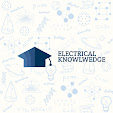LASER
LASER
LASER
A laser generally
emits a thin beam of intense light, often in the visible spectrum, and usually
in such a narrow range of wavelengths, it can be considered monochromatic.
The light is also coherent.
Light output from a laser has three important attributes:
• Intensity.
A high-powered laser can deliver energy to a
very small, well-defined area, where it may be capable of burning, cutting,
welding, or drilling. Large lasers may also be used as weapons, or for power
transmission.
• Collimation.
This term describes a beam of light that has parallel boundaries, and there[1]fore does not disperse
significantly when passing through a transparent medium such as air, glass, or
a vacuum. A laser beam can have such excellent collimation, it can be used in
precision measuring devices, and has been transmitted over very long distances,
even from the Earth to the Moon, where as[1]tronauts placed reflectors
during the Apollo missions.
• Controllability.
Because the beam can be generated with electrical
power, its intensity can be modulated rapidly with relatively simple electronic
circuits, enabling applications such as burning microscopic pits in the plastic
of a CD-ROM or DVD.
Laser diodes are now more common than all other
forms of lasers. They are found in pointers, printers, barcode readers,
scanners, computer mice, fiber-optic communications, surveying tools, weapon
sights, and directional lighting sources. They are also used as a light source
to trigger more powerful lasers.
No generic symbol is used for a laser, but a laser diode is often represented with the same symbol that is used for a light-emitting diode in the entry for LED indicators
A laser is built
around a gain medium, which is a material that can amplify light. The medium
can be a solid, liquid, gas, or plasma, depending on the type of laser.
Initially, an input
of energy provides stimulation for some atoms in the gain medium. This is known
as pumping the laser. The energy input can come from a powerful external light
source, or from an electric current.
Stimulation of an atom raises the quantum energy
level of an electron associated with the atom. When the electron collapses back
to its former energy state, it releases a photon. This is known as spontaneous
emission.
If one of the photons
encounters an atom that has just been excited by the external energy source,
the atom may release two photons. This is known as stimulated emission. Beyond
a thresh[1]old
level, the number of released photons can increase at an exponential rate.
If two parallel reflectors are mounted at opposite ends of the gain medium, they form a resonant cavity. Light bounces to and between the reflectors, while pumping and stimulated emission amplifies the light during each pass. If one of the mirrors is partially transparent, some of the light will escape through it in the form of a laser beam. The partially transparent mirror is known as the output coupler.
Laser Diode
A laser diode contains an LED. For a more
detailed description of the function of an LED.) The p-n junction of the diode
functions as the resonant cavity of the laser. Forward bias injects charges
into the junction, causing spontaneous emission of photons. The photons, in
turn, cause other electrons and electron-holes to combine, creating more
photons in the process of stimulated emission. When this process crosses a
threshold level, the current passing through the diode causes it to lase.


No comments:
If you have any doubts, please let me know